The Advantages of Light Steel Framing (LSF): Why Builders Across Canada Choose Steel Struct Pro (SSPRO)
Light Steel Framing (LSF) is changing the game in Canadian construction—and at Steel Struct Pro (SSPRO), we’re proud to lead this transformation. Our expertise in LSF means clients get structures that are not only durable and efficient but also sustainable and cost-effective. Let’s explore why builders are choosing Steel Struct Pro’s LSF solutions for residential, commercial, and institutional projects across Canada.
How Light Steel Framing Works at SSPRO
At Steel Struct Pro, our Light Steel Framing systems use high-quality, galvanized cold-formed steel, precisely engineered for the Canadian climate. Every project starts with advanced Building Information Modeling (BIM) to ensure the highest level of accuracy and full compliance with local codes—factoring in wind, snow loads, and other critical Canadian conditions.
The result? Prefabricated wall and floor panels, manufactured to exact standards, are shipped to your site for rapid assembly. This streamlined process means less time on-site, fewer delays, and maximum quality control—hallmarks of the SSPRO approach.

Why Choose Steel Struct Pro’s Light Steel Framing?
1. Exceptional Durability and Strength
With SSPRO Light Steel Framing, your structure is protected against rot, warping, and termite damage—problems that plague traditional wood framing. Steel’s resilience is especially valuable in Canada’s challenging climate, delivering long-term performance and reduced maintenance costs.
2. Enhanced Fire Resistance
Steel is non-combustible, making SSPRO buildings safer by reducing fire risk. This added layer of safety can mean lower insurance premiums and greater peace of mind for owners and occupants alike.
3. Environmentally Responsible Building
Steel is 100% recyclable. SSPRO’s LSF systems support sustainable construction, reducing the need for timber and conserving our forests. Choosing SSPRO means you’re helping to build a greener, more sustainable future.
4. Superior Cost Efficiency
While the initial cost of steel framing may be slightly higher, the SSPRO advantage is clear: faster installation, minimal material waste, and lower lifetime maintenance add up to real savings. Our prefabricated panels ensure faster project completion—meaning reduced labor costs and quicker occupancy.
5. Maximum Design Flexibility
Steel’s high strength-to-weight ratio allows SSPRO architects to create open, airy interiors with longer spans and flexible floor plans. Your design vision isn’t limited by the constraints of wood framing—innovative, modern architecture is possible with SSPRO.

Light Steel Framing vs. Wood Framing: The SSPRO Comparison
Strength and Stability: SSPRO’s LSF offers superior load-bearing capacity. Unlike wood, steel won’t shrink, twist, or warp due to temperature or humidity changes.
Thermal Performance: Wood does provide natural insulation, but SSPRO LSF systems are designed with advanced insulation solutions, meeting or exceeding Canadian energy efficiency standards.
Sustainability: While wood is renewable, steel’s longevity and recyclability offer a sustainable solution with a longer lifecycle—reducing resource use over time.
Faster Construction: SSPRO’s prefabricated steel panels speed up the construction process, saving time and reducing labor costs compared to wood framing.
Trust Steel Struct Pro (SSPRO) for Your Next LSF Project
In summary, Light Steel Framing from Steel Struct Pro gives Canadian builders a winning combination: durability, fire resistance, environmental responsibility, cost savings, and unmatched design flexibility. SSPRO is your trusted partner for high-quality, resilient, and eco-friendly construction.
Ready to build with the strength and innovation of SSPRO? Contact Steel Struct Pro today to discuss your next project and discover why more Canadian builders are choosing light steel framing for a better future.
